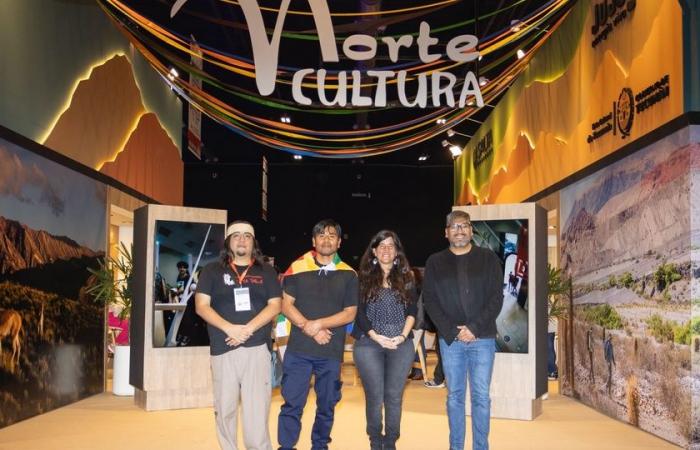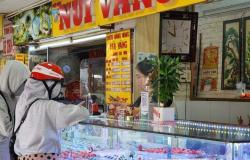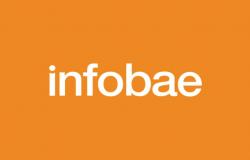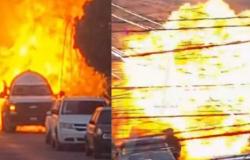
The International Book Fair Year after year it brings together writers, publishers and influential referents of culture in Argentina. Provinces like Saltathey also participate with their stand, which makes local authors visible and disseminates the Salteña culture in general.
This year the stand is shared with the neighboring provinces of Jujuy, Tucumán and Catamarca, among the four formed North Culturea space where you can find, until May 12, authors and activities of NOA.
It is in this framework that the province of Salta organized, continuing with a sustained work that comes from the 2024 local book fair, two days in which they congregated, from different perspectives, the original literature, the voices of the peoples, the different languages, the creation of didactic material for bilingual intercultural education and even workshops that invited to reflect from art, with the word of the pre -existing peoples.
While it was the Salta Ministry of Culture The one that promoted this initiative, was surrounded by referents as Álvaro Guaymáscoordinator of the modality of Bilingual Intercultural Education dependent on the Ministry of Education of the Province, to delineate the lines of action together and prepare the exchange tables.
“This arises thanks to a Strengthening and articulated work process which has begun with the Ministry of Culture of Salta at the Provincial Book Fair of the year 2024, which has to give rise to the languages that are today in Salta, ”Guaymás reflects and adds:“ Then this continuity has to do with expanding the topic at the national scale, since at the moment there are very few spaces in which the subject is being treated, and we consider that it is something that must be introduced not only in educational institutions, which is what it should be We had been working, but in society as a whole. And what better than the scenarios of the Book Fair to be able to do the right treatment. ”
Hip hop and original word
Herliz Amaru Gutierrez Ávila He was in charge of starting the day on Thursday 30, at the North Culture stand, with a workshop that linked different words from the native peoples of Salta, to intertwine them with the hip hop and his rhymes.
“This workshop arises from a need to try to define a Salteña identity, because there are people who have clearly identified, which are ethnic minorities, with the original peoples. And on the other hand, see that Hip-hop is a tool that can help give visibility of this problem”.
“From our foundation, Chaski Jam”, Says Herliz,“ we use hip hop as a means of education and as a tool for social transformation creating awareness. In this way the original peoples are the ones that can best teach us how to live better. ”
He crosslink between original word and hip hop It is a novel initiative in Salta, but it has a history in the continent, as the hypoper recounts: “I learned it from hip-hop in Bolivia and Chile and further north, where there is rap in Aymara, rap in Quechua. Here we in the north we managed to make a meeting in the Museo Terry of tilcara. There the project was emerging, strengthening it because the idea was. In my foundation group we have three young people who are from native peoples, Two Kollas and one from the Tastil town. So this theme was going through us. ”
On a personal capacity Herliz highlights: “In my personal search I also found that I have relatives that are from Santa Victoriain short, as I said Eduardo Galeano, We all have indigenous blood. So we continue along this path in the task is to revitalize the languages. ”
Didactic materials
The following activity was in charge of Lorena Leonharddesigner and illustrator received at the university of Buenos Aires, who, together with a group of students, worked in the illustration of the didactic material “From A to FW”, Book of alphabeto wichí which will be distributed in the schools of the Salta Chaco to be used as didactic material.
“It is a project that was recently printed and that they will be using it 1,900 students from the first and third grade of primary school To learn language, illustrated with specific elements of the region, ”says Lorena.
Leonhard’s work and his group had great impact since it could strengthen ties between university technicians and teachers from the territoriesgenerating an exchange that allowed to reach a material that will be very useful for bilingual work in the communities. “For us it was a pleasure that this project that can really get to school and that can be tested and verified in territory to know if our work,” says the designer.
Finally, Lorena states that “It is important that people approach this pavilion that sometimes it is not the most frequented, but that really gives a lot of information from us as a country and as a community. ”
Original literature
One of the special guests at the International Book Fair was author Kolla Milagro Domínguez, who came to present his last book “Santusa Iskay Kollas stories”He did with Emiliano Ruiz DíazResponsible for literature originally from the National Library.
“It was an excellent and very interesting experience, in my case, carrying a little of the multiculturalism of Salta towards other audiences. I celebrate that the Ministry of Culture has taken this initiative, both with my book and with other books, and that it also helps us in the task of marketing. ”
“The Kollas stories of Santusa Iskay” gather stories that arise from the memory, imagination and resignification of miracle “Pachacutec” Domínguez, born in Cuesta Azul, municipality of Nazareno, in the middle of Puna Salta.
“While I was somewhat worried about whether people would come to the presentation, since one is from Salta,” however, “there were a lot of people and the reception was excellent. In addition, the book is not only a product with a commercial purpose, but also has the purpose of showing, sharing, everything related to the Andean culture and the Andean culture”.
Milagro states that he wants to continue sharing, with the dissemination of this second book. “I still bet on making some contribution in the cultural issue of the Kolla people, of the Quechua culture. And that this contribution also has a utility, that is a contribution to what is bilingual intercultural education, “says Milagro Domínguez. And adds:” So in that sense I am working with a book that for now has a title ‘Quechua and Aymara Renso in Nazareno‘, and the idea is to recover terms, words, phrases that still remain today, so that they are a kind of basis on which to advance in the recovery of the mother tongue. ”
The author is also working on a novel “Where there will be a friction between Andean culture and spirituality and Catholic culture,” he says.
Indigenous word and intercultural education bilingual
The last space on Wednesday 30 and the first of May 1 were related to different languages that are spoken in Saltaas well as the process that is carried out from the Bilingual Intercultural Educationrespectively.
With the coordination of Álvaro Guaymás The conversation occurred first, “Salta multilingual province. Languages, territory and articulation between State and communities “with the participation of Milagro Domínguez, Daniel Huircapan and Ana Carolina Hehta space where the language recovery process was problematized.
Following this Álvaro emphasizes that “This process fortunately has been defended by its speakers, by its referents, community authoritiesas well as educational referents. We have evidence in the education system at least nine languagesthen NAHARRO NORMAwhich is a recognized anthropologist who works with communities a long time ago, has a map with many more languages within the provincial territory. This always has to do with the places from where these linguistic maps are based, which are always built maps with communities, their referents and their authorities. ”
“For migration and for the place where it is located located, which is a border context, Surely there are other languagesbut not with a presence like Wichí, which is a language that has linguistic vitality, or a language of use such as the Guaraní language, which is mainly spoken in the departments of San Martín and Oran, or the Quechua language, which the grandmothers and grandparents of the Kolla people speak it, ”added Guaymás.
From the original voices table, “the writer Kolla Milagro Domínguez participated, Daniel Huircapan was also invited to WHICHwhich is the Language University Centerwhich has included indigenous languages and in that inclusion process one of the fundamental steps it has given for our country is the assembly of a map of languages, which is now available on the Internet. ”
The activity coordinator expanded that “also Ana Carolina Hetcht was invitedConicet researcher who has been working with communities for several decades. His work is linked to bilingual teachers in the assembly of different devices. Then the table had to do a little with The path that began at the Book Fair in the province of Salta last yearthe installation of the space here at the International Book Fair of Buenos Aires and then entering a detail about what is the situation of indigenous languages in Argentina from this updated sociolinguistic map ”.
As for the Bilingual Intercultural Education (EIB), The table was made “Intercultural Education in the province of Salta. Creation of didactic materials, current challenges, desirable horizons“, Which” has to do with literacy policies that have been carried in the province since 2020and in the case of intercultural education, a specific intercultural literacy line was formulated in 2022, which is a work articulated with UNICEF with the organization of Ibero -American States and the CONICET”, Highlights Guaymás.
Of the table participated Yamila Sánchez, Celia Rosemberg and Florencia Cicconewith the coordination of Guaymás, who reflects: “This literacy policy has to do with the update of resources, methodologies and, mainly, of awareness processes to teachers who work in the San Martín and Rivadavia departments In order to develop literacy proposals within the framework of respect for cultural diversity, the axis of indigenous languages within the framework of the rights of indigenous peoples ”.
“In that sense We consider this space appropriate to socialize work and to also be able to promote that in other provinces the bilingual intercultural education areas have these strengthening processesas we have had here with the Ministry of Culture, with the Ministry of Educational Planning, and we who belong to the Ministry of Educational Management, and thus with other agencies that have to do with indigenous peoples, “says the coordinator.
In this sense, Guaymás concludes: “With all this articulate, this interwoven, it is possible to be able to develop today, resume and continue with the Training of more than 440 teachers In these two departments of initial level and primary level and adding to teachers of initial level of the department of Iruya and the department of Santa Victoria, where they are Nazareno and Santa Victoria Oeste ”.





